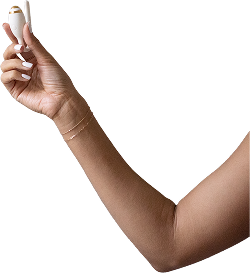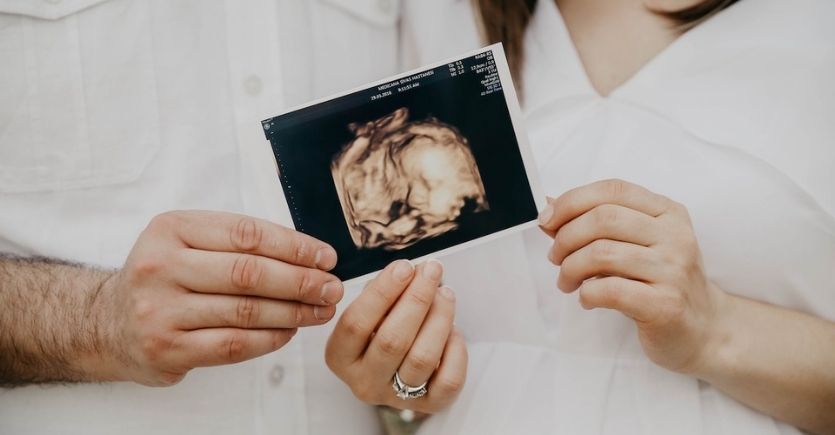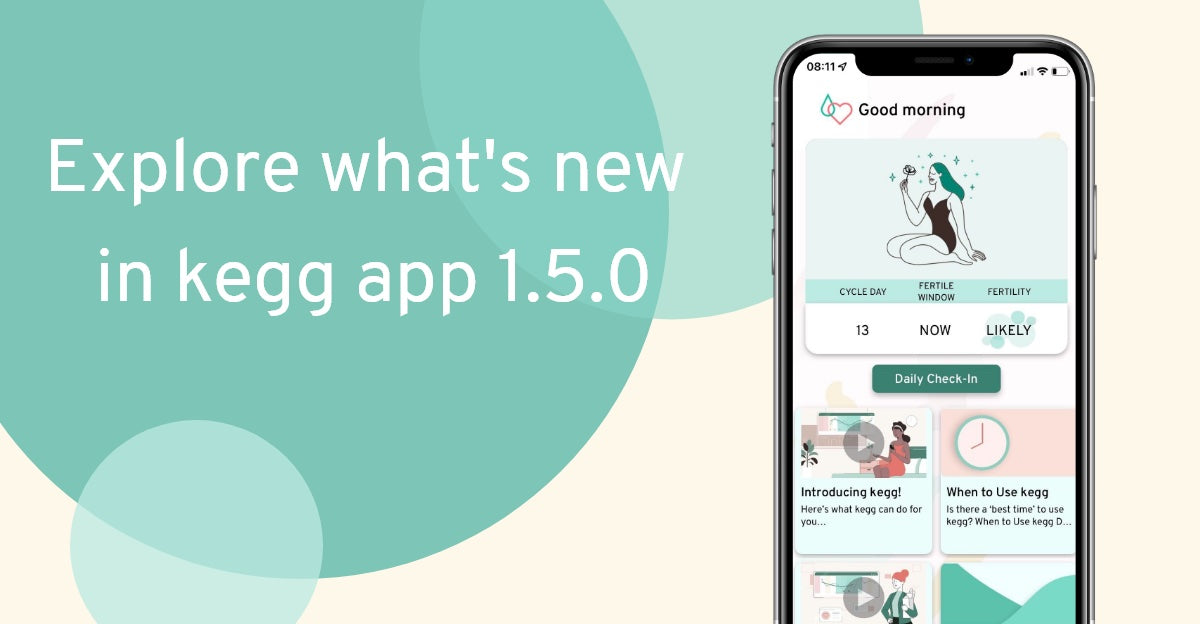Photo by Cliff Booth
When you are planning to get pregnant or trying to conceive, it is helpful to recognize the signs of ovulation so you can know when you need to get busy. From cervical fluid, to tracking your basal body temperature, and everything in between, you will be empowered by identifying the signs your body is telling you. Whether you’re trying to conceive or wish to track your cycles, you will feel in charge of your fertility.
Ovulation occurs when the egg is released from the ovary after it reaches maturation. Conception is only possible during the fertile window which extends from about 4-5 days before ovulation through 24 hours after ovulation. When you’re trying to conceive, there is a lot of emphasis on timing efforts around ovulation, but you may be missing the mark if you wait to try until ovulation!
Ovulation occurs when the egg is released from the ovary after it reaches maturation. Conception is only possible during the fertile window which extends from about 4-5 days before ovulation through 24 hours after ovulation. When you’re trying to conceive, there is a lot of emphasis on timing efforts around ovulation, but you may be missing the mark if you wait to try until ovulation!
How long does it take to ovulate?
The timeframe of the egg releasing from the ovary and beginning the journey to the uterus through the fallopian tube varies greatly among women. However, thanks to the nourishing qualities of the cervical fluid, the sperm can be sustained in the reproductive tract for about 5 days while it awaits the release of the egg. Once ovulation takes place and the egg is released, it will begin to dissolve about 24 hours later if not fertilized.
When does ovulation occur?
It can be very challenging to predict in advance when ovulation will take place, especially if cycles are irregular. While the luteal phase length stays fairly consistent between cycles, the follicular phase, or time between the first day of your cycle (period) and ovulation can vary greatly.
The term Mittelschmerz refers to “mid cycle pain” that often occurs during ovulation. While ovulation occurs during the middle of the cycle if cycles are about 28 days in length, in longer cycles ovulation may not be in the middle of the cycle. Calendar prediction methods often fail to correctly identify ovulation and the fertile window as they rely on the average length of cycle. Numerous factors influence when ovulation occurs, and as cyclical human beings, we don’t function according to a calendar-based method.
The term Mittelschmerz refers to “mid cycle pain” that often occurs during ovulation. While ovulation occurs during the middle of the cycle if cycles are about 28 days in length, in longer cycles ovulation may not be in the middle of the cycle. Calendar prediction methods often fail to correctly identify ovulation and the fertile window as they rely on the average length of cycle. Numerous factors influence when ovulation occurs, and as cyclical human beings, we don’t function according to a calendar-based method.

How can you pinpoint your ovulation?
While ovulation is paramount when you’re trying to conceive, it is the fertile window that is important to track so you can optimally time your trying to conceive efforts. The fertile window is the time during the cycle that pregnancy may result from intercourse or insemination. Even though the egg can only survive for about 24 hours, the fertile window typically extends for about 5 days, due to the cervical mucus which nourishes and sustains the sperm as it makes its way to the fallopian tubes and awaits the release of the egg. By properly identifying the fertile window, you can be sure you are optimally timing your conception efforts. Waiting for ovulation day significantly reduces the likelihood of conceiving. The chances of conceiving are highest 2 days before ovulation, and actually lower on ovulation day itself.
Due to the hormonal changes of the cycle that occur before ovulation, there are some key signs to lookout for to both recognize your fertile window opening and impending ovulation.
Due to the hormonal changes of the cycle that occur before ovulation, there are some key signs to lookout for to both recognize your fertile window opening and impending ovulation.
Cervical mucus tracking
First, you can learn to track your cervical fluid. Cervical fluid, or the fifth vital sign, can help you identify the phases of your cycle including the fertile window. In addition, by becoming aware of your typical cervical mucus pattern, you will also be keenly aware should you experience a change in your cervical mucus which may also indicate a problem such as infection. There are many methods for tracking your cervical mucus; if you are interested in tracking your fertile window using cervical mucus tracking, find one that suits you best and commit to learning it. It typically takes 6 months or longer to confidently track your cycle by observing your cervical mucus though, so if you are trying to conceive at this time, it may not be the most time-efficient option.
The start of your cycle begins with menstruation. While cervical mucus is not typically observed during this time, you can indicate that you had period bleeding on your calendar for the amount of days it lasted. After the period ends, there is typically very little cervical mucus to observe and it tends to be sticky, tacky, dry, or paste-like. As the cycle progresses, the cervical mucus will slowly become more creamy or lotion-like. Both sticky and creamy cervical mucus are typically considered non-fertile mucus types, as they both hinder the sperms’ ability to navigate. Note: creamy cervical mucus can sometimes be fertile.
As the fertile window approaches and opens, the cervical fluid becomes more abundant, slippery, stretchy, and wet in sensation. The increasingly wet and lubricative cervical fluid indicates the opening of the fertile window. Egg white cervical mucus or EWCM is often discussed among women trying to conceive. While EWCM is fertile cervical mucus, watery cervical mucus is also fertile. It is possible to ovulate and never observe EWCM, and conversely, many women experience EWCM multiple times per cycle even when ovulation is not happening, particularly in those with PCOS.
After ovulation, the rising progesterone results in a thickening of the mucus, which works to create a barrier to protect the entrance to the uterus by preventing foreign substances from entering. This shift to a more sticky cervical mucus is indication that ovulation has likely passed and the fertile window is closing.
While tracking your cervical mucus may be beneficial for tracking your fertile window, it is not for everyone. For some, it is added stress on an already challenging journey towards getting pregnant. Others find it uncomfortable and burdensome to frequently check their cervical mucus throughout the day.
The start of your cycle begins with menstruation. While cervical mucus is not typically observed during this time, you can indicate that you had period bleeding on your calendar for the amount of days it lasted. After the period ends, there is typically very little cervical mucus to observe and it tends to be sticky, tacky, dry, or paste-like. As the cycle progresses, the cervical mucus will slowly become more creamy or lotion-like. Both sticky and creamy cervical mucus are typically considered non-fertile mucus types, as they both hinder the sperms’ ability to navigate. Note: creamy cervical mucus can sometimes be fertile.
As the fertile window approaches and opens, the cervical fluid becomes more abundant, slippery, stretchy, and wet in sensation. The increasingly wet and lubricative cervical fluid indicates the opening of the fertile window. Egg white cervical mucus or EWCM is often discussed among women trying to conceive. While EWCM is fertile cervical mucus, watery cervical mucus is also fertile. It is possible to ovulate and never observe EWCM, and conversely, many women experience EWCM multiple times per cycle even when ovulation is not happening, particularly in those with PCOS.
After ovulation, the rising progesterone results in a thickening of the mucus, which works to create a barrier to protect the entrance to the uterus by preventing foreign substances from entering. This shift to a more sticky cervical mucus is indication that ovulation has likely passed and the fertile window is closing.
While tracking your cervical mucus may be beneficial for tracking your fertile window, it is not for everyone. For some, it is added stress on an already challenging journey towards getting pregnant. Others find it uncomfortable and burdensome to frequently check their cervical mucus throughout the day.
kegg
kegg is the gold standard for tracking cervical mucus because it gives you a complete and accurate view of your entire fertile window, not just part of it. By clearly showing when you are most fertile, kegg takes the guesswork out of timing intimacy or insemination, something that can make all the difference on your path to pregnancy. Unlike traditional methods that require months of learning, training, and multiple daily observations, kegg delivers the same (and more) insights in less than 2 minutes a day, with no training needed. This makes it the most reliable, simple, and empowering way to understand your cycle and maximize your chances of conception.
While ovulation day is not the day with the highest chance of conception, understanding when you ovulate is helpful for knowing when you can take a pregnancy test reliably, and when you can expect your next period if pregnancy did not occur. The kegg chart predicts in advance your "ovulation probability", or the days when ovulation is most likely to occur. Your real-time data, the impedance trend, also reveals important information about ovulation. When fertile, the impedance trend forms a valley. The impedance trend begins moving downwards on your kegg chart as the cervical mucus becomes increasingly more fertile. Once ovulation occurs, the readings then rise upwards again and the cervical mucus becomes less fertile. Ovulation most commonly occurs on the last low day in the valley before rising upwards. In the example below, ovulation occurred on cycle day 12.
While ovulation day is not the day with the highest chance of conception, understanding when you ovulate is helpful for knowing when you can take a pregnancy test reliably, and when you can expect your next period if pregnancy did not occur. The kegg chart predicts in advance your "ovulation probability", or the days when ovulation is most likely to occur. Your real-time data, the impedance trend, also reveals important information about ovulation. When fertile, the impedance trend forms a valley. The impedance trend begins moving downwards on your kegg chart as the cervical mucus becomes increasingly more fertile. Once ovulation occurs, the readings then rise upwards again and the cervical mucus becomes less fertile. Ovulation most commonly occurs on the last low day in the valley before rising upwards. In the example below, ovulation occurred on cycle day 12.

The LH surge
Tracking your luteinizing hormone, or LH as it is commonly called, with ovulation predictor kits, is another way to track your impending ovulation. LH is produced by the pituitary gland and is responsible for triggering the release of the egg from the follicle of the ovary, or ovulation. Unfortunately, tracking LH is not straightforward. LH surges about 12-36 hours before ovulation. In addition, the surge in LH can last for 12-36 hours, and in most women, remains positive after ovulation has occurred.
Problematically, LH does not surge until 2-3 days of the fertile window have passed. When waiting for the LH surge, you may miss it, as LH often peaks overnight, and unless you check it multiple times days, you may miss the peak. Women with PCOS may observe sustained LH rises or multiple LH surges throughout their cycles as well. While tracking LH can be frustrating for multiple reasons, some women find it is helpful in recognizing when ovulation may likely occur. It is important to note that a positive LH surge does not guarantee ovulation will take place.
Problematically, LH does not surge until 2-3 days of the fertile window have passed. When waiting for the LH surge, you may miss it, as LH often peaks overnight, and unless you check it multiple times days, you may miss the peak. Women with PCOS may observe sustained LH rises or multiple LH surges throughout their cycles as well. While tracking LH can be frustrating for multiple reasons, some women find it is helpful in recognizing when ovulation may likely occur. It is important to note that a positive LH surge does not guarantee ovulation will take place.

Tracking your basal body temperature
While tracking your basal body temperature (BBT) is not particularly useful in identifying your fertile window, taking your temperature upon waking everyday can help determine when ovulation has passed. When trying to conceive, this confirmation that ovulation has occurred can help identify when the fertile window is closing. Rising progesterone, which primarily occurs after ovulation, causes a slight warming of the body. As a result, there is a small increase in the body’s temperature after ovulation. This shift in temperature is a good indication that ovulation has occurred. Typically the temperature rise is sustained throughout the luteal phase until progesterone levels begin to fall. This decrease in progesterone both results in the start of the new cycle and a lowering in the basal body temperature. Women who track their cycles using the symptothermal method (STM) track their BBT as part of the fertility tracking method.
Ovulation Pain
Some women report that they feel pain, twinges, cramping, or pinching near one or both ovaries before, during, and/or after ovulation that can range from mild to severe. This pain, often referred to as mittelschmerz or mid-cycle pain, typically occurs between the time the LH surges and the time of ovulation, and varies among women. Not all women experience ovulation pain, and since it doesn’t typically occur until just before, during, or after ovulation, it is not a reliable way to detect your fertile window. The pain can linger after ovulation as well, which can add to the confusion of when to time efforts.
You are in charge
How you wish to track your fertility is ultimately your decision. Whether you love to learn and want to get familiar with your cervical mucus patterns, or you prefer to have kegg do the work for you, it is important to focus your efforts during the fertile window, and not specifically just on ovulation day.



